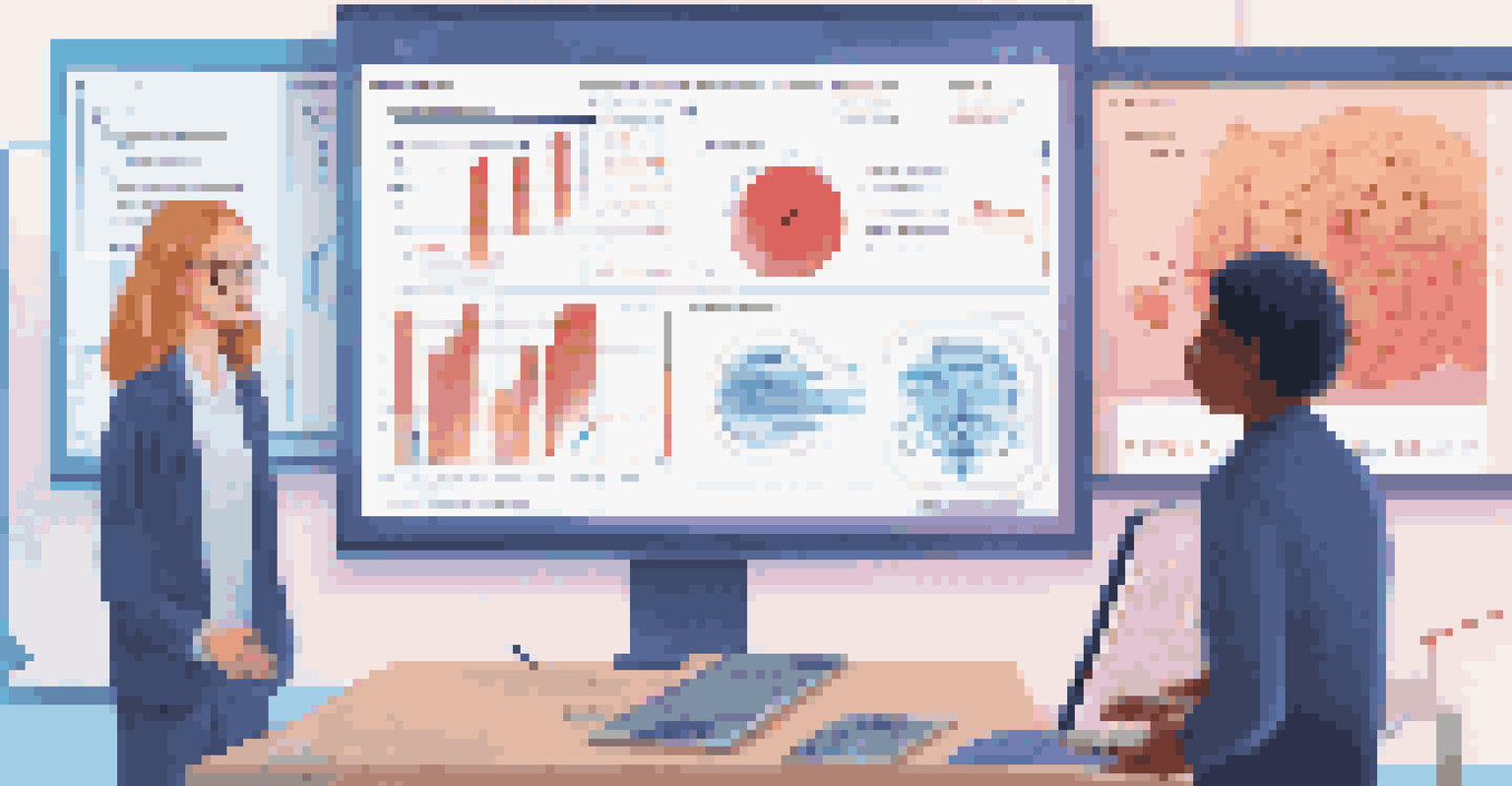AI in Educational Research: Analyzing Learning Theories

Understanding Learning Theories in Education
Learning theories are frameworks that describe how individuals acquire, retain, and recall knowledge. They provide insights into the cognitive processes involved in learning, shaping educational practices over time. From behaviorism to constructivism, each theory offers unique perspectives on how students engage with information.
The greatest gift of education is the ability to think critically and creatively, which is enhanced by understanding how we learn.
For instance, behaviorism focuses on observable behaviors and the responses to stimuli, while constructivism emphasizes the importance of social interaction and personal experience in learning. These theories help educators tailor their teaching methods to better meet the needs of their students. As educational environments evolve, understanding these foundational theories becomes even more crucial.
With the rise of technology, especially AI, educational researchers are now able to analyze learning theories with greater depth. This integration allows for a more nuanced understanding of how students learn in diverse contexts, paving the way for innovative teaching strategies.
The Role of AI in Analyzing Learning Theories
AI technologies, such as machine learning and natural language processing, are revolutionizing the way researchers analyze learning theories. These tools can process vast amounts of data, revealing patterns and insights that were previously difficult to identify. This capability enhances the understanding of how different learning theories apply in varied educational settings.

For example, AI can analyze student engagement data across multiple platforms, helping researchers determine which learning theories are most effective for specific demographics. This data-driven approach allows educators to make informed decisions about curriculum design and instructional strategies. Rather than relying solely on traditional research methods, AI provides a more comprehensive view of educational outcomes.
AI Enhances Learning Theory Analysis
AI technologies enable researchers to analyze learning theories more effectively by processing large datasets and revealing patterns in student engagement.
Moreover, AI can simulate learning environments to test various teaching methods grounded in different theories. By observing how students interact with these simulations, researchers can gain valuable insights into the efficacy of each theory in practice.
Personalized Learning through AI and Learning Theories
One of the most exciting applications of AI in education is the move towards personalized learning. By analyzing individual learning styles and preferences, AI technologies can recommend tailored educational resources that align with specific learning theories. This approach not only enhances student engagement but also fosters deeper understanding.
Technology will not replace great teachers, but technology in the hands of great teachers can be transformational.
For instance, if a student thrives in a constructivist environment, an AI-driven system can suggest collaborative projects that encourage peer interaction. On the other hand, a student who benefits from behaviorist methods might receive immediate feedback through quizzes and gamified learning experiences. This customization makes learning more relevant and effective for each student.
Personalized learning is not just about technology; it’s about understanding the students themselves. By integrating AI with established learning theories, educators can create environments where every learner feels supported and challenged.
Evaluating Learning Outcomes with AI
The effectiveness of any educational method is ultimately measured by learning outcomes. AI's ability to analyze data on student performance allows researchers to evaluate the success of various learning theories in real-time. This ongoing assessment helps educators refine their approaches based on what works best for their students.
For example, AI can track quiz scores, project completions, and engagement metrics, providing a comprehensive picture of student progress. By analyzing these outcomes through the lens of different learning theories, researchers can identify which methods yield the best results. This evidence-based approach supports continuous improvement in educational practices.
Personalized Learning with AI
AI can tailor educational resources to individual learning styles, improving student engagement and understanding through customized experiences.
Moreover, AI can help identify at-risk students early on, allowing for timely interventions. By understanding how different learning theories affect individual performance, educators can implement targeted strategies to support these students, ensuring that no one falls behind.
Challenges of Integrating AI in Educational Research
While the potential of AI in educational research is immense, several challenges come with its integration. Data privacy concerns are paramount, as collecting and analyzing student data must be conducted ethically and responsibly. Educators and researchers must find a balance between harnessing AI’s capabilities and protecting student information.
Additionally, there can be a steep learning curve associated with adopting new technologies. Educators may require training to effectively utilize AI tools in conjunction with established learning theories. This need for professional development is vital to ensure that AI is used to enhance, rather than complicate, the educational process.
Another challenge lies in ensuring that AI tools are accessible to all educational institutions, regardless of their resources. Equity in access to technology must be prioritized to prevent widening the educational gap between different communities.
Future Trends in AI and Educational Research
As technology continues to advance, the future of AI in educational research looks promising. Emerging trends indicate a shift towards more collaborative and experiential learning environments, facilitated by AI-driven insights. This evolution will enable educators to create more engaging and effective learning experiences for students.
Moreover, we can expect AI to play a larger role in developing adaptive learning systems that respond to individual student needs in real-time. These systems will likely incorporate advanced algorithms that continuously learn from student interactions, further personalizing the educational experience. This adaptability aligns seamlessly with modern learning theories that emphasize the importance of catering to diverse learning styles.
Real-Time Evaluation of Outcomes
AI's ability to track student performance allows for continuous assessment of learning theories, leading to data-driven improvements in educational practices.
In addition, interdisciplinary research combining AI with psychology, neuroscience, and education will likely yield new insights into learning processes. By integrating various fields of study, researchers can develop more holistic approaches to education that are grounded in a deeper understanding of how humans learn.
Conclusion: The Synergy of AI and Learning Theories
The synergy between AI and learning theories holds great potential for transforming educational research and practice. As educators and researchers embrace these technologies, they can gain deeper insights into how students learn, leading to more effective teaching strategies. This collaboration not only enhances educational outcomes but also prepares students for a rapidly evolving world.
By leveraging AI's capabilities, educational institutions can create tailored learning experiences that align with individual needs and preferences. This personalization fosters a more inclusive environment, where every student has the opportunity to succeed. The integration of AI into educational research ultimately empowers educators to make data-informed decisions.

As we look to the future, it's clear that the combination of AI and learning theories will continue to shape the landscape of education. By navigating the challenges and seizing the opportunities, we can create a more effective and dynamic learning environment for everyone.